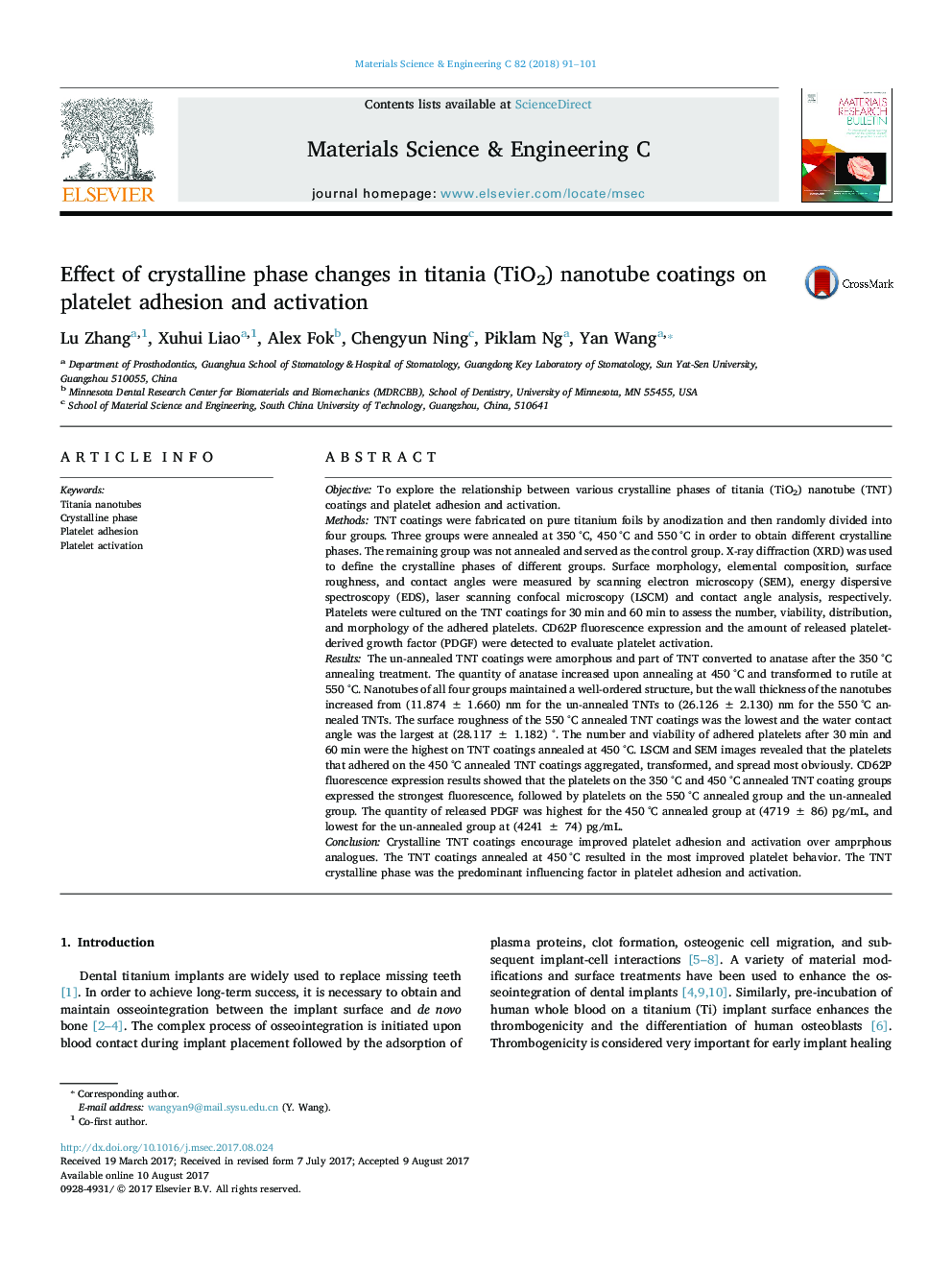| کد مقاله | کد نشریه | سال انتشار | مقاله انگلیسی | نسخه تمام متن |
|---|---|---|---|---|
| 5434168 | 1509139 | 2018 | 11 صفحه PDF | دانلود رایگان |
- Crystalline TNT coatings improve platelet adhesion and activation.
- Higher amount of pure anatase in the TNT coatings benefits for better platelet behavior.
- 450 °C is suitable heat treatment temperature for TNT coating modifications.
ObjectiveTo explore the relationship between various crystalline phases of titania (TiO2) nanotube (TNT) coatings and platelet adhesion and activation.MethodsTNT coatings were fabricated on pure titanium foils by anodization and then randomly divided into four groups. Three groups were annealed at 350 °C, 450 °C and 550 °C in order to obtain different crystalline phases. The remaining group was not annealed and served as the control group. X-ray diffraction (XRD) was used to define the crystalline phases of different groups. Surface morphology, elemental composition, surface roughness, and contact angles were measured by scanning electron microscopy (SEM), energy dispersive spectroscopy (EDS), laser scanning confocal microscopy (LSCM) and contact angle analysis, respectively. Platelets were cultured on the TNT coatings for 30 min and 60 min to assess the number, viability, distribution, and morphology of the adhered platelets. CD62P fluorescence expression and the amount of released platelet-derived growth factor (PDGF) were detected to evaluate platelet activation.ResultsThe un-annealed TNT coatings were amorphous and part of TNT converted to anatase after the 350 °C annealing treatment. The quantity of anatase increased upon annealing at 450 °C and transformed to rutile at 550 °C. Nanotubes of all four groups maintained a well-ordered structure, but the wall thickness of the nanotubes increased from (11.874 ± 1.660) nm for the un-annealed TNTs to (26.126 ± 2.130) nm for the 550 °C annealed TNTs. The surface roughness of the 550 °C annealed TNT coatings was the lowest and the water contact angle was the largest at (28.117 ± 1.182) °. The number and viability of adhered platelets after 30 min and 60 min were the highest on TNT coatings annealed at 450 °C. LSCM and SEM images revealed that the platelets that adhered on the 450 °C annealed TNT coatings aggregated, transformed, and spread most obviously. CD62P fluorescence expression results showed that the platelets on the 350 °C and 450 °C annealed TNT coating groups expressed the strongest fluorescence, followed by platelets on the 550 °C annealed group and the un-annealed group. The quantity of released PDGF was highest for the 450 °C annealed group at (4719 ± 86) pg/mL, and lowest for the un-annealed group at (4241 ± 74) pg/mL.ConclusionCrystalline TNT coatings encourage improved platelet adhesion and activation over amprphous analogues. The TNT coatings annealed at 450 °C resulted in the most improved platelet behavior. The TNT crystalline phase was the predominant influencing factor in platelet adhesion and activation.
Journal: Materials Science and Engineering: C - Volume 82, 1 January 2018, Pages 91-101
